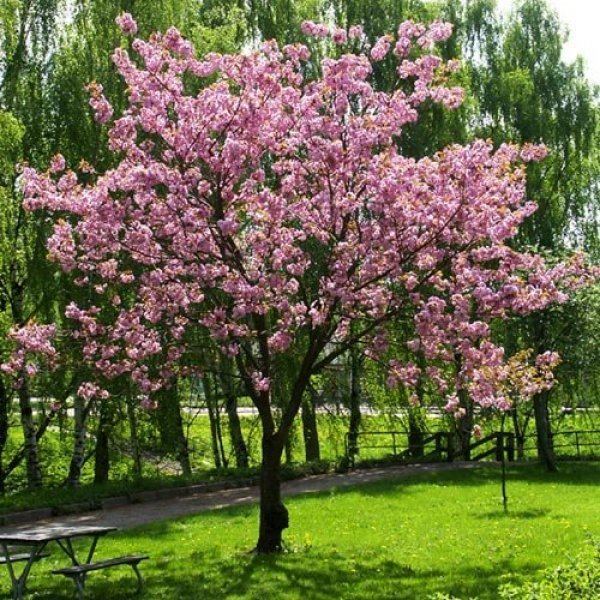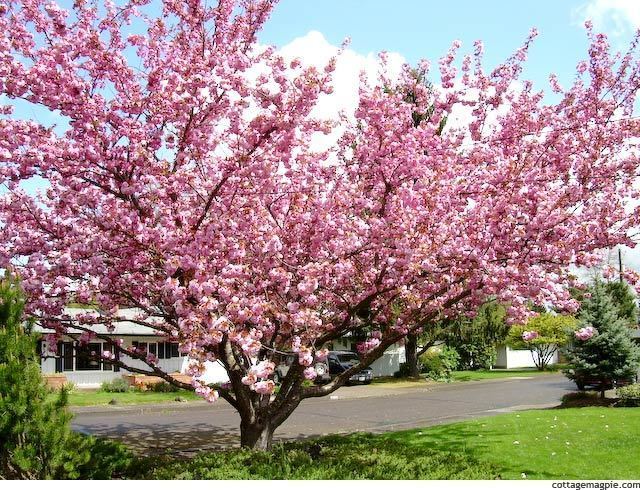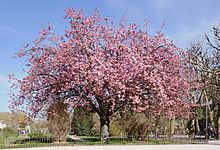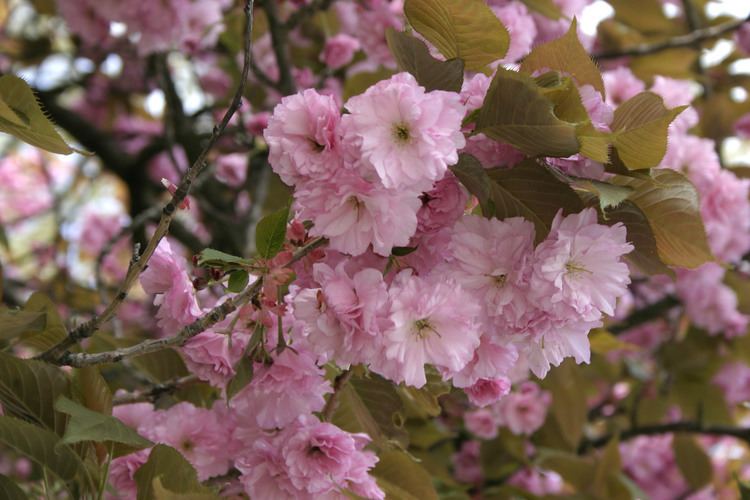Kingdom Plantae Family Rosaceae Subgenus Cerasus Scientific name Prunus serrulata Rank Species | Order Rosales Genus Prunus Section Cerasus Higher classification Prunus | |
 | ||
Similar Yoshino Cherry, Prunus, Prunus sargentii, Winter‑flowering cherry, Prunus speciosa | ||
Prunus serrulata or Japanese cherry; also called hill cherry, oriental cherry or East Asian cherry, is a species of cherry native to Japan, Korea and China and is used for its spring cherry blossom displays and festivals.
Contents
- Kwanzan flowering cherry prunus serrulata kwanzan
- Description
- Flowers
- Cultivation
- Varieties and cultivars
- References

Kwanzan flowering cherry prunus serrulata kwanzan
Description

Prunus serrulata is a small deciduous tree with a short single trunk, with a dense crown reaching a height of 26–39 feet (7.9–11.9 m). The smooth bark is chestnut-brown, with prominent horizontal lenticels. The leaves are arranged alternately, simple, ovate-lanceolate, 5–13 cm long and 2.5–6.5 cm broad, with a short petiole and a serrate or doubly serrate margin. At the end of autumn, the green leaves turn yellow, red or crimson.
Flowers

The flowers are produced in racemose clusters of two to five together at nodes on short spurs in spring at the same time as the new leaves appear; they are white to pink, with five petals in the wild type tree. The fruit is a globose black drupe 8–10 mm diameter.
Cultivation

Prunus serrulata is widely grown as a flowering ornamental tree, both in its native countries and throughout the temperate regions of the world. Numerous cultivars have been selected, many of them with double flowers with the stamens replaced by additional petals.

In cultivation in Europe and North America, it is usually grafted on to Prunus avium roots; the cultivated forms rarely bear fruit. It is viewed as part of the Japanese custom of Hanami.

The National Cherry Blossom Festival is a spring celebration in Washington, D.C., commemorating the 1912 gift of Prunus serrulata Japanese cherry trees from Tokyo to the city of Washington. They are planted in the Tidal Basin park.
Varieties and cultivars
There are several varieties:

Some important cultivars include:
